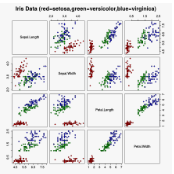We report a solar jet phenomenon associated with successive flares on November 10th 2014. These explosive events were involved with the satellite spots' emergence around a delta-type sunspot in the decaying active region NOAA 12205. The data of this jet was provided by Solar Dynamic Observatory (SDO), X-Ray Telescope (XRT) aboard Hinode, Interface Region Imaging Spectrograph (IRIS) and Domeless Solar Telescope (DST) at Hida Observatory, Kyoto University. These plentiful data enabled us to present this series of papers to discuss the entire processes of the observed phenomena including the energy storage, event trigger, and energy release. In this paper, we focus on the energy build-up and trigger phases, by analyzing the photospheric horizontal flow field around the active region with an optical flow method. The analysis reveals the following three. (i) The observed explosive phenomena involved three satellite spots, the magnetic fluxes of which successively reconnected with their pre-existing ambient fields. (ii) All of these satellite spots emerged in the moat region of a pivotal delta-type sunspot, especially near its convergent boundary with the neighboring supergranules or moat regions of adjacent sunspots. (iii) Around the jet ejection site, the positive polarities of satellite spot and adjacent emerging flux encountered the global magnetic field with negative polarity in the moat region of the pivotal delta-type sunspot, and thus the polarity inversion line was formed along the convergent boundary of the photospheric horizontal flow channels.
翻译:2014年11月10日,我们报告了与连续的耀斑相关的太阳喷射现象。这些爆炸性事件涉及卫星点在正在衰落的NOAA 12205号活跃区域三角型太阳点周围的出现。该卫星点的数据由太阳动态观测站(SDO)、X光望远镜(XRT)提供。该喷射机的数据由Hinode、界面区域成像光谱仪(IRIS)和Domeless太阳能望远镜(DST)在京都大学希达天文台的Hida天文台提供。这些丰富的数据使我们能够展示这一系列论文,以讨论观测到的现象的整个过程,包括能源储存、事件触发器和能量释放。在本文件中,我们侧重于能源积累和触发阶段,方法是用光流法分析活跃区域周围的光源横向流动场。 所观测到的爆炸现象涉及三个卫星点,其磁通量与其先前存在的环境场相接连连相连接。这些卫星点的磁通性通度都出现在太阳系的关键三角型太阳系系区域,因此,离离太阳流的极地极地处的极地极地极地块的轨道正近处,与近极地极地极地处的极地极地铁流和极地平极地块形成正地段的轨道。





